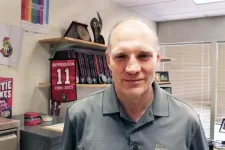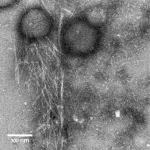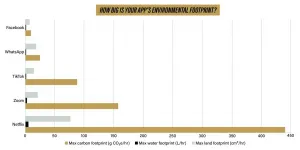--By Julie Chao
Scientists say that any serious plan to address climate change should include carbon dioxide removal (CDR) technologies and policies, which makes the newly launched CDR Primer an especially vital resource, says Berkeley Lab scientist Margaret Torn, one of about three dozen scientists who contributed to this document.
"Atmospheric CO2 concentrations are already 50% over historic natural levels - 270 ppm (parts per million) in pre-industrial times vs 414 ppm today," said Torn. "To slow climate change and avoid its worst impacts, climate scientists tell us that we need to restore atmospheric CO2 concentrations to about 350 ppm or less. To do that, we need CDR technologies and policies to remove excess CO2 from the atmosphere."
Carbon dioxide removal, also often referred to as negative emissions technologies, encompasses a broad array of techniques and practices, such as geologic sequestration, direct air capture, bioenergy with carbon capture, and improved forest management. The lead editors of the CDR Primer are from the University of Pennsylvania and CarbonPlan.
"Because there are so many different negative emissions technologies, nobody is an expert in all of them," said Torn, a senior scientist in Berkeley Lab's Earth and Environmental Sciences Area. "There was a need for one comprehensive document to introduce students and practitioners to all of the different options. The strength of this document is that it comprehensive, in terms of how many different approaches are covered, and that it considers technological readiness, cost, and global potentials."
Sequestering carbon in soil through improved agricultural practices could be an especially attractive and efficacious CDR technique, Torn said. Berkeley Lab scientists are working on how to quantify and manage root growth and how to understand and harness the soil microbiome for carbon sequestration. If it were implemented globally, it has the potential to sequester a large amount of carbon, plus it's considered a "no regrets" strategy because increasing the amount of soil in the carbon is good for soil health anyway, she said.
The document, two years in the making, was supported by a number of foundations and other organizations and will be made available for free as a digital, open-source book.
A 1-Atom-Deep Look at a Water-Splitting Catalyst
--By Glenn Roberts Jr.
X-ray experiments at the U.S. Department of Energy's Lawrence Berkeley National Laboratory (Berkeley Lab) revealed an unexpected transformation in a single atomic layer of a material that contributed to a doubling in the speed of a chemical reaction - the splitting of water into hydrogen and oxygen gases. This process is a first step in producing hydrogen fuel for applications such as electric vehicles powered by hydrogen fuel cells.
The research team, led by scientists at SLAC National Accelerator Laboratory, performed a unique X-ray technique and related analyses, pioneered at Berkeley Lab's Advanced Light Source (ALS), to home in on the changes at the surface layer of the material. The ALS produces X-rays and other forms of intense light to carry out simultaneous experiments at dozens of beamlines.
"There is simply no other place in the world that can do these analyses on the level that the ALS can right now," said Slavomír Nemšák, a beamline scientist at the ALS who contributed to the study, published Jan. 11 in Nature Materials.
The technique they used allowed them to probe the surface of a catalyst material called lanthanum nickel oxide (LNO) that is useful in water splitting. Catalysts are used to speed up or otherwise improve the efficiency of chemical reactions.
The catalyst was engineered in precise layers, and was about 100 atoms thick. Samples were prepared with either a nickel-rich or a lanthanum-rich surface. The samples with the nickel-rich layers carried out the water-splitting reaction twice as fast, and the atomic structure had transformed from a cubic to hexagonal pattern in the last atomic layer.
"The ALS helped to reveal this difference," Nemšák said. "This technique brought extremely precise depth-specific information on the chemical composition of the catalysts." Computer simulations performed at Berkeley Lab's National Energy Research Scientific Computing Center (NERSC) confirmed the catalyst's hexagonal structure would be more active and stable than the cubic structure.
Read a related SLAC National Accelerator Laboratory press release, "Study Shows Tweaking One Layer of Atoms on a Catalyst's Surface Can Make It Work Better," Jan. 11, 2021.
New Research Technique Sheds Light on Least Understood Part of Lithium Batteries
--By Julie Chao
One of the aspects of lithium-ion batteries least understood by scientists has now been elucidated by a new research approach, opening the door to major improvements in battery performance, according to a new study by Berkeley Lab scientists.
Their study, recently published in the journal Joule, used a technique developed by Berkeley Lab battery scientists in the Energy Technologies Area to illustrate the structures of large organic molecules generated during battery operation. These molecules are known to reside in a part of the battery called the solid-electrolyte interphase (SEI) layer, which is poorly understood but has a critical impact on battery performance.
"The findings reveal a new dimension of chemical composition inside lithium-ion batteries and enables a new direction for rational engineering of the battery's electrolyte system," said lead author Chen Fang, a postdoctoral researcher in Berkeley Lab's Energy Technologies Area.
The researchers used a unique technique of "on-electrode chromatography" coupled with matrix-assisted laser desorption/ionization (MALDI) diagnostic capability at Berkeley Lab's Molecular Foundry to separate and illustrate the structures of large organic molecules generated during battery operation. On-electrode chromatography allows the separation of organic molecules on the surface of the electrode. MALDI is typically used to characterize biomolecules such as proteins and peptides.
This coupled approach, used successfully for the first time in battery research, is highly adoptable as it uses commercially available instrumentation. It will allow scientists to precisely, quickly, and conveniently identify the molecules in the battery, including their structures and weight distributions.
Designing a better electrolyte system will enable next-generation batteries, said battery scientist Gao Liu, the study's corresponding author. "The current electrolyte system works very well at ambient temperatures and with existing battery chemistries," he said. "However, the current electrolytes do not work well with the high energy density batteries, high-voltage batteries, or batteries working in extreme cold and with extreme fast charging."
Yi Liu of the Molecular Foundry was also a corresponding author.
Ozone Generators May Help Remediate Contamination Caused by Thirdhand Smoke
--By Julie Chao
In 10 years of studying thirdhand smoke, which is the toxic cigarette residue that clings to virtually all indoor surfaces for months or years, Berkeley Lab scientist Hugo Destaillats said the most frequent question he hears from the public is how to remediate property where a smoker once lived.
Remediation companies frequently use ozone generators to eliminate odors from mold, tobacco, and fire damage, blasting homes with high levels of ozone. But scant research has been done to assess its effectiveness in removing toxic residues, or identify any associated risks. So Destaillats and colleagues from Berkeley Lab's Indoor Environment Group designed a room-sized chamber study to determine the effects of ozonation on the concentration of chemical compounds typically found in thirdhand smoke.
Funded by the University of California's Tobacco Related Diseases Research Program and recently published in the journal Environmental Research, the study found that ozonation can remove tobacco contaminants that were adsorbed on materials, but it also caused a burst of contaminants when the generator is running. Particles remained airborne for a period of a few hours. The study highlighted the need to specify a safe re-entry time after ozonation, which should be performed in unoccupied spaces.
"Ozone could remove nicotine and polycyclic aromatic hydrocarbons (PAHs) that had adsorbed onto fabrics after smoking, but our study shows that people need to wait a few hours after the generator has run and allow the space to be ventilated before going back inside," he said.
This study was conducted on freshly generated thirdhand smoke. Next, the researchers will look at materials that have been contaminated for much longer periods of time - on the order of years. "There are a lot of deep reservoirs for tobacco contaminants in the home. Gypsum, the main component of dry wall, is very porous and has a large capacity for indoor contaminants," Destaillats said. "Nicotine can be stored in dry wall for quite some time. Same with carpets."
INFORMATION:






